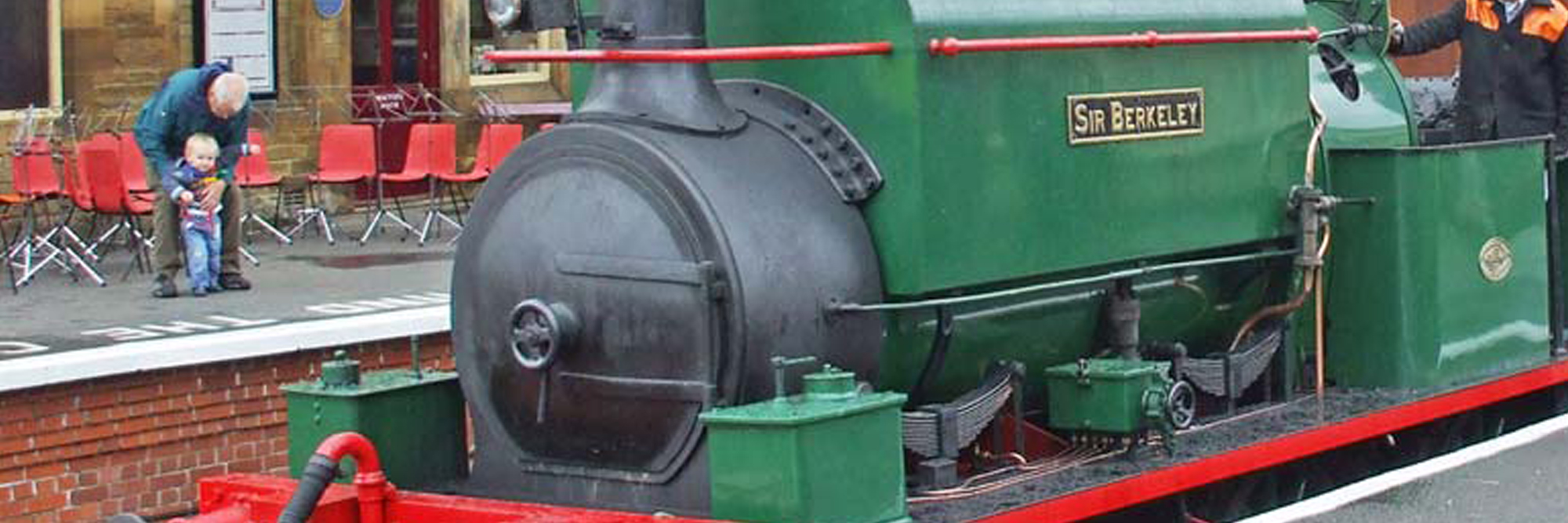An archetypal constructors locomotive
‘Sir Berkeley’ served the industry for 72 years before being withdrawn in 1963. Too small for passenger duties, ‘Sir Berkeley’ is now owned by the Vintage Carriages Trust (VCT) at Ingrow.
Data File
Built: 1891 Manning Wardle & Co.
Boiler Pressure: 140 psi
Tractive Effort: 8,600 lbf
Weight 19.2 tons
Valve Gear: Stephenson
Cylinders: 12”x18″ Outside
Numbers carried during working career: Manning Wardle 1210, Logan & Hemingway 30, then 10, Cranford Ironstone ‘Sir Berkeley’
History
‘Sir Berkeley’ was built by Manning Wardle & Co. Ltd., of Leeds and is an example of their typical ‘L’ class contractor’s locomotive designed in the latter half of the 1800’s. These were used the world over by contractors carrying out various engineering jobs.
This engine was built in 1891 and supplied new to Logan & Hemmingway, numbered No. 30. They used it in the construction of the Manchester, Sheffield and Lincolnshire Railway (MSL) Company’s extension to Derby and then on the Great Central Railway’s London extension (the Great Central being the successor to the MSL). By 1935, Logan & Hemmingway no longer had use for the engine and it was sold onto the Cranford Ironstone Company, near Kettering. It found employment there shunting rakes of mineral wagons from the quarry face to the London Midland and Scottish Railway’s exchange sidings. It carried out this task until 1957, apart from a spell on loan to Pilton Quarries in Rutland between 1943 and 1947.ln 1957 the locomotive changed hands for the final time before preservation when it was acquired for use on the Byfield Quarries near Banbury. Here the engine was used for only 12 months before being relegated to standby duties.
The engine was finally withdrawn from service in 1963 and was purchased privately for preservation, in February 1965. It arrived on the Keighley and Worth Valley Railway where it sported a rather ungainly looking cab roof which had been fitted in 1957 just before it left the Cranford Ironstone Quarry. Although this offered more protection to the footplate crews it certainly did nothing to improve its appearance. It came to light after the engine arrived on the Worth Valley that the original brass rimmed weatherboard was still in existence at Cranford and arrangements were made to acquire this and reunite it with the locomotive, as seen today.
When its boiler certificate expired it was bought by the Vintage Carriages Trust and in due course returned to working order. Withdrawn again in 2001 a new boiler was purchased and the engine returned to action in 2007 at the Middleton Railway, Leeds, where it is on loan and could be seen in regular action until it was withdrawn for an overhaul when its current boiler certificate expired. ‘Sir Berkeley’ returned to the KWVR in 2015 for the 50th Anniversary of VCT.
